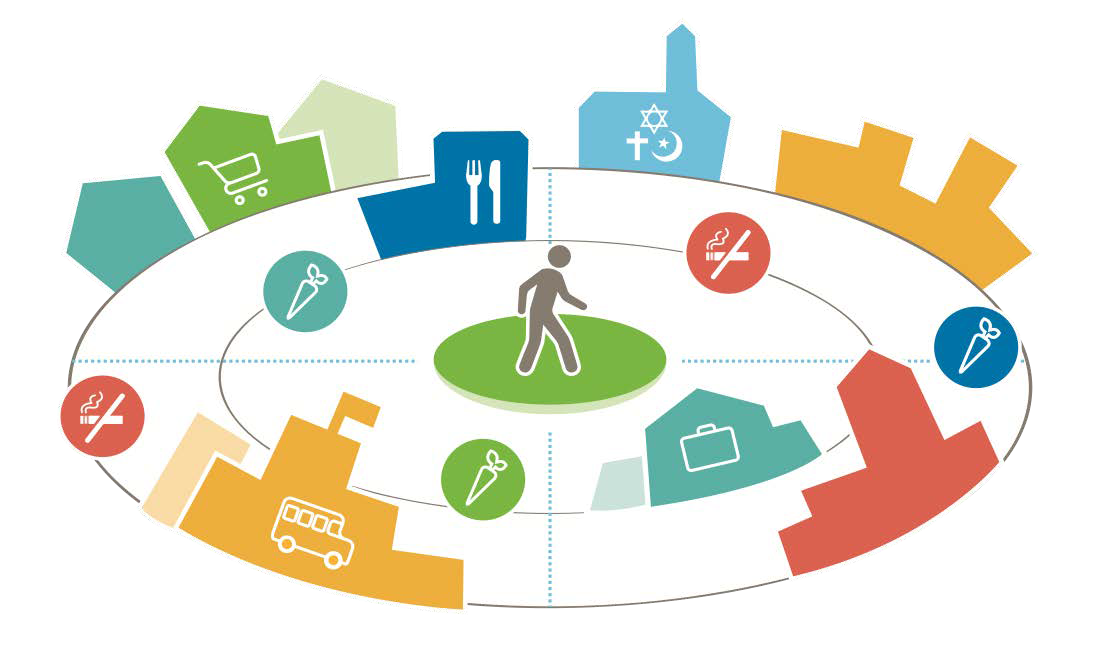The Blue Zones Project

By optimizing the settings where we routinely spend our time such as worksites, school, restaurants, grocery stores, faith-based communities and neighborhoods, we make healthy choices easier and optimize community standards for health and economic prosperity.
Blue Zones Project is based on principles identified during a ten-year worldwide longevity study commissioned by National Geographic and detailed in Dan Buettner’s New York Times best-seller.
The Blue Zones first came into prominence in 2005 when Dan Buettner, Tony’s brother, was asked by National Geographic Magazine to write an article about communities around the world that were found to have a disproportionate number of centenarians, full of vitality and free of diseases commonly accepted as a part of aging. The goal was to see whether the longevity data was true by firsthand observation and dialogue with these centenarians. And, if true, what made factors influenced these amazing results.
Funded in part by the US National Institute on Aging, Buettner and his team traveled to five areas around the world to explore and learn.
- Barbagia region of Sardinia. In these mountainous highlands they found 1:1 male to female centenarians compared to the 1:4 ratio found in the U.S.
- Ikaria, Greece. This Aegean Island provides home to one of the world’s lowest rates of middle age mortality and the lowest rates of dementia.
- Nicoya Peninsula, Costa Rica. The world’s lowest rates of middle age mortality and second highest concentration of male centenarians.
- Loma Linda, California. There is a concentration of Seventh-day Adventists here, who are shown to live 10 years longer than their North American counterparts.
-
Okinawa, Japan, where females over 70 are the longest-lived population in the world.
So, what did they find are the secrets to this longevity?
- Move Naturally
They found environments that constantly nudge people into moving in the course of their daily life rather than relying on time at the gym. The people in many of these places grow their own gardens and don’t use mechanical conveniences for house and yard work. - Live with Purpose
It was startling to hear Tony say that the two most critical years are the first year after birth and the year you retire. In Okinawa there was no word to describe retirement. Each person, regardless of his or her age, had “ikigai,” a reason to get up in the morning. - Downshift
People in Blue Zones have routines to shed stress. The Okinawans begin their day with ancestry veneration; the Adventists have a weekly 24-hour sanctuary of time in the Sabbath, and the Sardinians frequently unwind with friends over a glass of wine. Failure to downshift and relieve stress leads to chronic inflammation which can contribute to every major age-related disease. - The 80 percent rule
Our bodies function best if we stop eating when 80 percent full rather than overloading our systems. People in the Blue Zones eat their biggest meals early in the day and their smallest meal in the late afternoon or early evening, quite opposite to most in our country. - Plant-Based Diet
Beans and lentils are the cornerstone of most centenarian diets, with meat eaten only an average of five times per month. Servings tend to be 3-4 ounces, about the size of a deck of cards. - Drink Moderately
People in most Blue Zones drink wine moderately with friends and food. - Embrace Faith and Belonging
Out of the 260 centenarians they spoke with, only 3 did not have a committed social network of faith. Tony quoted research showing that attending services four times a month adds 4-14 years of life expectancy. - Put Family First
Intergenerational living and socializing was observed with time invested in social engagement. - Right Tribe
They observed social circles over years and even lifetimes, as in Okinawan “moais” where the same group of people support each other through the thick and thin of life. In our society, hanging out with those who share your values and healthy behaviors promotes health.
It is truly fascinating to learn about the culture and successes of these regions but, what is really exciting is that Dan Buettner, his brother Tony and their team have created a way to replicate the Blue Zones Power of 9 in average towns all across the United States. Through engaging community civic leaders, restaurants, schools, grocery stores, churches, and businesses they use their evidence-based practices to design the places people live, work, and play so healthy choices are easy to make.
At the Community Development Forum in Ukiah a group of interested people listened to this story and had a chance to envision how Ukiah could benefit from becoming a Blue Zones Project City. Currently, information is being gathered to determine the full interest for and impact to our community should Ukiah move forward with the project.
Want to learn more about the Blue Zones Project?
Link to the original National Geographic Article: https://bluezones.com/wp-content/uploads/2015/01/Nat_Geo_LongevityF.pdf
Link to Blue Zones Project by Healthways website: http://www.healthways.com/bluezonesproject
Link to the Blue Zone Story website: https://bluezones.com/
Call or email Tiffany Gibson, Wellness Director at Ukiah Valley Medical Center: 707/463-7523 or gibsonta@ah.org
###
Tiffany Gibson is the Wellness Director at Ukiah Valley Medical Center. Her background includes adult education, volunteer organization, event management and philanthropic activities. When not helping UVMC staff to achieve their highest degree of wellness, she enjoys serving on the North Coast Opportunities board, camping on the coast and cooking with her family.

